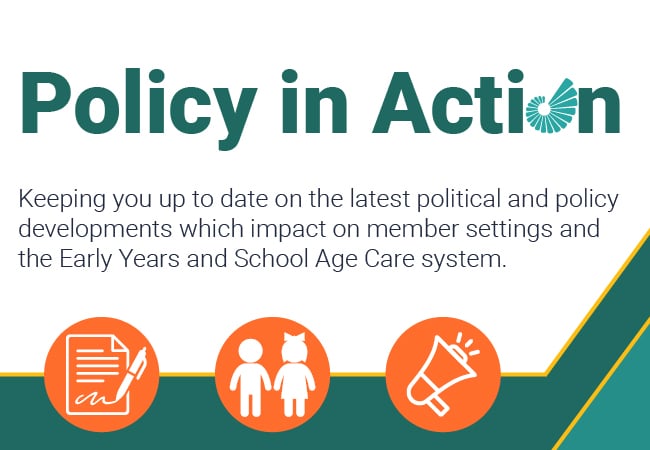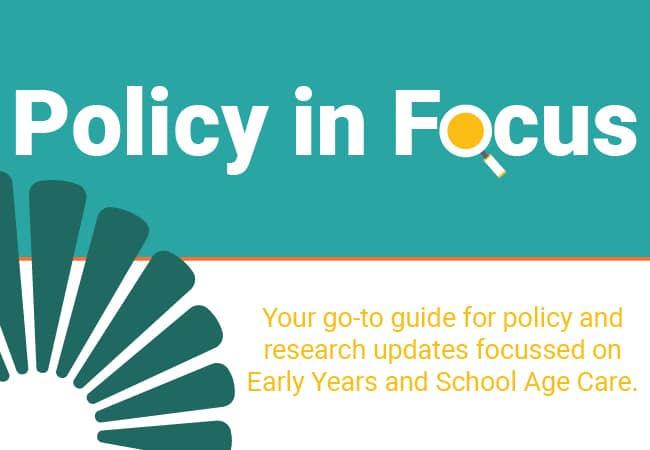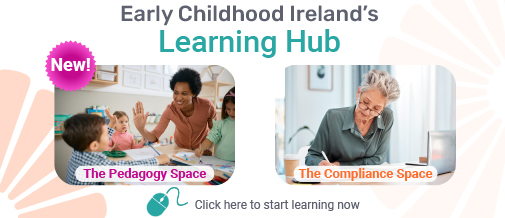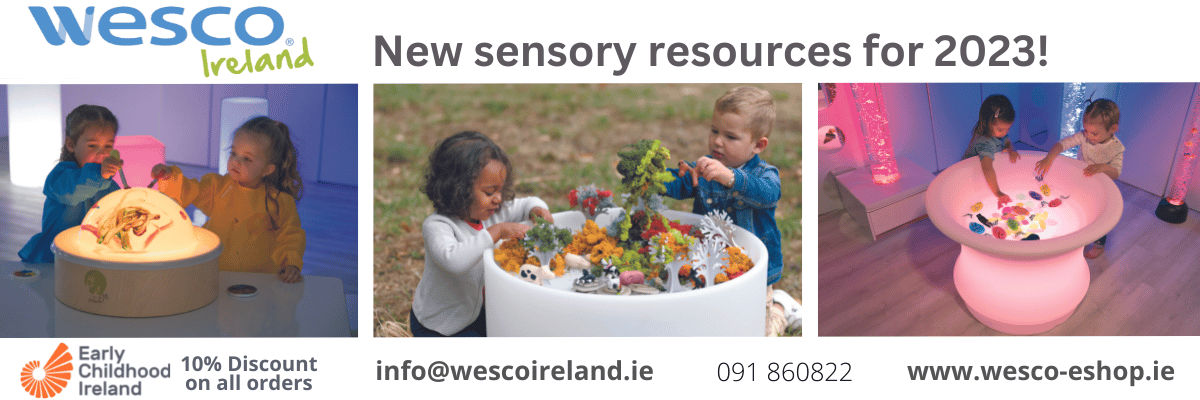Researching the Outdoors for Under Twos

Hi everyone, my name is Linda Kelly and I work as a Researcher with Early Childhood Ireland. Before joining the ECI team I completed my PhD with the Infant and Child Research Lab in Trinity College Dublin where I researched how playtime between parents and children supports young children’s learning. Now I’m applying all I’ve learned about the power of play to the early years sector, with a big focus on the importance of outdoor play!
I was curious to learn more about the experiences of children under two years in the outdoors in Early Learning and Care (ELC). Taking a look at international research, what struck me was that children in this age group are not often included in research and policy on the outdoors. I feel it is important to learn more about the kinds of activities that very young children like to do outside and how outdoor play supports their learning and development. This will allow us to better support very young children to reach their potential in the outdoors and to ensure that children of all ages and abilities experience high-quality outdoor provision.
Reading through existing research confirmed to me that children under two years like being outdoors, enjoy exploring and engaging with nature, and find it fun to challenge themselves and take risks in outdoor spaces. Several key features of very young children’s outdoor play jumped out at me and highlighted a few ways in which we can enhance the experiences of very young children in the outdoors in ELC.
Physical Activity
One important aspect of the outdoors is the opportunities it provides for children to be physically active. According to my review of the research, infants and toddlers usually spend the majority of their time outdoors engaged in physically active play. For infants, uneven surfaces such as grassy mounds and inclines as well as borders on plant beds and low fences provide perfect opportunities to practice crawling and cruising. Open space and a variety of manufactured equipment such as slides and climbing frames and natural features like plants and tree logs promote greater physical activity among toddlers.
Risky Play
I also learned that very young children enjoy engaging in risky play outdoors. Children find risky activities such as climbing, jumping, balancing, and hiding exciting and fun. This type of play provides children with important opportunities to challenge themselves and test their limits, problem-solve, and learn how to manage risk themselves. One study I read demonstrated that features in the outdoors that very young children liked best and promoted risky play included tyre towers, climbing frames, stepping blocks, large rocks, and bushes to hide behind, although these resources may not typically be provided to children under three years (Murray and Hrusa Williams 2019).
Learning
The outdoors is also an important space for young children to learn about the world. We know that infants learn through their senses and through movement. Opportunities to explore natural elements in the outdoors can be enhanced by hanging wind chimes and colourful mobiles, and creating sand and water play areas to stimulate infants’ senses. Toddlers might engage with natural elements like water and stones to explore concepts such as weight and volume, whilst also soaking up new vocabulary. Open-ended natural elements encourage children to develop their individual interests and creativity. In the outdoors, a stick can become a magic wand, a musical instrument, or something to be counted or stacked. Shrubbery and open green space can provide opportunities for calm, sensory engagement with nature and exploratory play.
Role of adults
My quest to understand more about the outdoor play experiences of very young children also made me realise the importance of acknowledging the beliefs, fears, and preferences of early years educators and parents when it comes to outdoor provision. For example, some adults may think of outdoor play as something that children do at breaktime, or that “real learning” can only take place within the structured indoor environment. The outdoors may also be viewed as a space which is not safe for very young children. An Irish study that I read suggested that some educators avoid going outside in damp weather, even though children are always happy to be outdoors (Kernan and Devine 2010).
One thing I took away from this research was a need for better understanding among adults of the important learning opportunities that are afforded to young children in the natural environment. One study I read suggested how documenting very young children’s experiences in the outdoors and sharing learning stories with parents may promote greater awareness that the outdoors can be a context that is equally important to children’s development as indoor learning (Rouse 2016).
Overall, my deep dive into the research highlighted the unique learning opportunities afforded to children under two years in the outdoors and helped me to understand some of the ways in which we can support the learning and development of the youngest children attending ELC.
Kernan, M., and Devine, D. (2010) ‘Being confined within? Constructions of the good childhood and outdoor play in early childhood education and care settings in Ireland’, Children & Society, 24, 371–385, available: https://doi.org/10.1111/j.1099-0860.2009.00249.x.
Murray, E. J., and Hrusa Williams, P. (2019) ‘Risk-tasking and assessment in toddlers during nature play: The role of family and play context’, Journal of Adventure Education and Outdoor Learning, 20(3), 259–273, available: http://dx.doi.org/10.1080/14729679.2019.1660193.
Rouse, E. (2016) ‘Making learning visible – Parents perceptions of children’s learning outdoors’, Early Child Development and Care, 186(4), 612-623, https://doi.org/10.1080/03004430.2015.1048510









